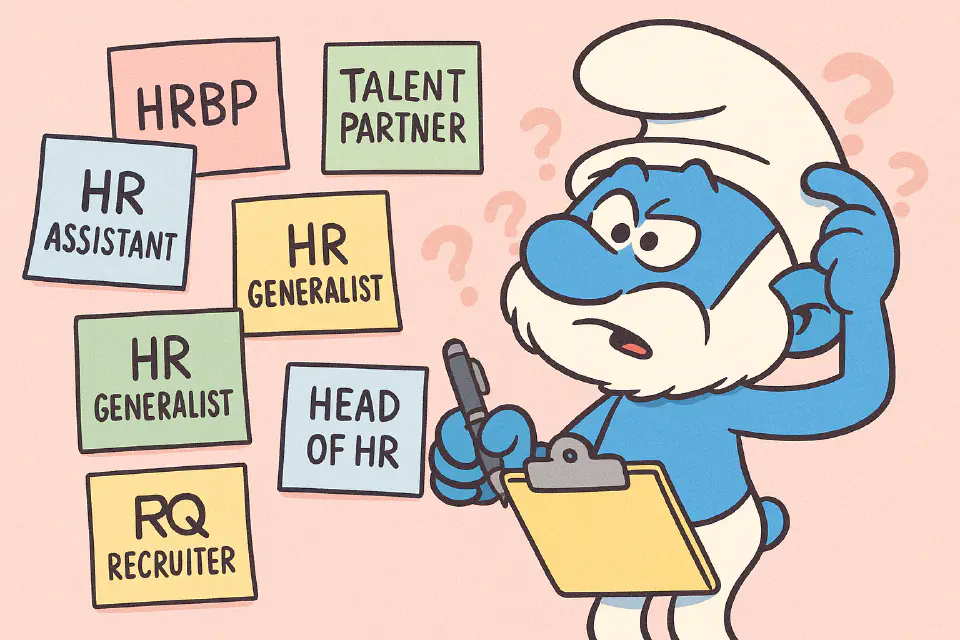
HR Job Titles Explained
Job titles in HR can be confusing. We break them down so you know what to expect—and what to ignore.
Welcome to the HR title jungle.
From HRBP to Talent Partner to Head of People, the world of HR job titles can feel like a branding experiment gone wild. But behind the buzzwords lie real differences — in focus, scope, and expectations.
Let’s bring clarity.
Why HR Titles Are So Confusing
There’s no global standard. Title meanings vary based on:
- Company size
- Industry trends
- Region and language
- Culture and org design
The Most Common Titles (and What They Mean)
🧍 HR Assistant / HR Coordinator
- Entry-level roles
- Focus on admin, scheduling, paperwork, HRIS
- Often support recruiting, onboarding, or data entry
Useful for learning the mechanics of HR operations.
👥 HR Generalist
- Broad operational role covering multiple HR areas
- Common in smaller companies
- Great for building foundational experience
In a small firm, the Generalist may do everything from contracts to culture.
🤝 HR Business Partner (HRBP)
- Strategic role working with business leaders
- Balances advisory, planning, and employee relations
- Often mid-senior level, but varies a lot
🧠 People Partner / People Operations
- Modern rebranding of HRBP in some companies
- Focus on systems, data, employee experience
- Often used in tech/startup environments
Sometimes the difference is cultural rather than functional.
📈 Talent Acquisition (TA) Partner / Recruiter
- Focused solely on attracting and hiring talent
- May specialize by function or level
- Often work closely with hiring managers and branding
TA is a specialization, not a junior version of HR.
🎓 L&D / Learning Partner
- Designs and delivers learning programs
- May also manage onboarding or leadership development
- Often works cross-functionally
In large orgs, L&D can be split into facilitation, design, and tech roles.
📊 People Analyst / HR Analyst
- Data-focused role
- Works on dashboards, reports, and workforce insights
- Increasingly central in strategic HR teams
Usually supports HRBPs, leadership, or workforce planning.
💬 DEI / Employee Experience Lead
- Focus on inclusion, belonging, and fairness
- May work on policy, events, training, and data
- Often operates across functions
Role varies from advocacy to change strategy.
👑 Head of HR / Head of People
- Leads the HR function
- Manages team, budget, and strategic roadmap
- Title may be equivalent to “HR Director” or pre-CHRO
In startups, this is often the most senior HR title.
🧭 Chief People Officer / CHRO
- Executive-level leadership role
- Owns all people strategy and HR governance
- Part of the C-suite or executive board
Title ≠ Seniority
Some companies use fancy titles early (e.g. “People Partner” for a coordinator). Others are more conservative.
Always look at:
- Scope of responsibility
- Reporting lines
- Budget and team size
- Strategic influence
Final Tip
HR titles are evolving. What matters most is not the title — but the impact you have, the growth you experience, and the value you bring.